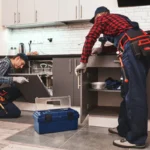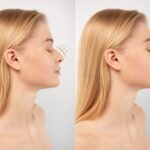Rhinoplasty, commonly known as a ‘nose job’, is a transformative surgical procedure that can significantly alter the appearance and even function of the nose. For many in London, it delivers the desired aesthetic outcome, boosting confidence and improving breathing. However, sometimes the initial surgery doesn’t quite hit the mark, or unexpected issues arise. This is where revision rhinoplasty in London comes into play. If you’ve undergone rhinoplasty surgery in London and are feeling less than satisfied with the results, understanding the signs that might indicate a need for a revisional procedure is crucial.
Why Consider Revision Rhinoplasty?

Even with the most skilled surgeons, the human body’s healing process is complex and can be unpredictable. A primary rhinoplasty might not achieve the patient’s aesthetic goals due to a variety of factors, including scar tissue formation, inadequate or excessive tissue removal, or simply a miscommunication of expectations. Functional issues, such as breathing difficulties, can also emerge or worsen after the initial surgery.
Revision rhinoplasty is often more complex than the primary procedure. It requires a surgeon with exceptional skill, experience, and a deep understanding of nasal anatomy and the intricacies of post-surgical changes. Therefore, if you’re contemplating a revision, choosing an expert in London who specialises in such procedures is paramount.
Key Indicators You Might Need Revision Rhinoplasty
Identifying whether you require a revision can be a subtle process. It’s not always about a dramatic deformity; sometimes, it’s a persistent dissatisfaction with a specific aspect of your nose. Here are some common signs that suggest you might benefit from a revision:
Aesthetic Concerns
The most common reasons for revision rhinoplasty are related to cosmetic dissatisfaction. After your initial rhinoplasty surgery in London, take an honest look at your nose from all angles.
Persistent Asymmetry
While no human face is perfectly symmetrical, a well-executed rhinoplasty should strive for balanced results. If your nose appears noticeably crooked, deviated, or one nostril is significantly different in size or shape from the other after healing, this could be a strong indicator for revision. This might be due to uneven cartilage removal, shifting of grafts, or differential scar contracture.
Undesirable Tip Shape
The nasal tip is a focal point of the nose. Issues here are frequently cited as reasons for revision. You might notice:
- Pinched Tip: Where the tip appears overly narrowed or constricted, often due to excessive cartilage removal.
- Pollybeak Deformity: The tip lacks projection and appears rounded or bulbous, resembling a parrot’s beak. This can occur if the bridge is reduced too much in relation to the tip, or due to scar tissue formation.
- Over-rotated or Under-rotated Tip: The tip might be pointing too far upwards (pig-like) or too far downwards.
- Irregularities or Bumps: Visible indentations, bumps, or sharp edges on the tip that weren’t present or desired.
Dorsal Irregularities
The nasal dorsum (bridge of the nose) is another common area for concerns. After your initial rhinoplasty surgery in London, you might notice:
- Scooped-out Appearance: An overly aggressive removal of the dorsal hump can leave the bridge looking concave or “saddled,” which is unnatural.
- Residual Hump: If the original hump was not adequately reduced, or if new bone/cartilage growth has occurred, you might still have a visible bump.
- Open Roof Deformity: If nasal bones were removed without properly closing the “open roof” created, it can lead to a flat, wide appearance and visible irregularities.
- Visible Grafts: In some cases, grafts used during the primary surgery might become visible or palpable, creating an unnatural contour.
Wide or Unflattering Nostrils
The size and shape of the nostrils are integral to overall nasal harmony. If your nostrils appear overly wide, narrow, asymmetrical, or have an unnatural flare after your initial rhinoplasty surgery in London, a revision could address these concerns.
Functional Issues
Beyond aesthetics, a successful rhinoplasty should ideally improve or at least not worsen breathing function. If you’re experiencing new or persistent breathing difficulties after your surgery, this is a serious concern that warrants investigation.
Nasal Obstruction
One of the most critical reasons for revision rhinoplasty in London is persistent or new-onset nasal obstruction. This can manifest as difficulty breathing through one or both nostrils, especially during exercise or sleep. Causes might include:
- Collapsed Nasal Valves: The internal or external nasal valves, which are crucial for airflow, can be compromised during surgery, leading to collapse.
- Septal Perforation: A hole in the septum (the wall dividing the nostrils) can occur, leading to whistling sounds and difficulty breathing.
- Adhesions or Scarring: Excessive scar tissue can narrow the nasal passages.
- Residual Deviated Septum: If a pre-existing deviated septum wasn’t adequately corrected, or if it has shifted post-operatively, it can continue to obstruct airflow.
If you find yourself constantly breathing through your mouth, experiencing disturbed sleep due to nasal congestion, or finding it hard to exercise, consult with a surgeon specialising in rhinoplasty surgery in London about potential functional issues.
Emotional and Psychological Impact
Beyond the physical manifestations, how you feel about your nose after surgery is a significant indicator.
Persistent Dissatisfaction or Self-Consciousness
If, months after your initial rhinoplasty surgery in London, you still feel deeply unhappy with your nose, find yourself constantly scrutinising it, or feel more self-conscious than before, it’s a strong sign that the outcome hasn’t met your expectations. While it’s normal to go through a period of adjustment, prolonged unhappiness suggests a deeper issue.
Regret or Disappointment
Experiencing significant regret or disappointment about the results of your primary rhinoplasty can take a toll on your mental well-being. This emotional distress is a valid reason to explore options for revision rhinoplasty in London.
When to Seek a Consultation for Revision Rhinoplasty

It’s important to allow ample time for your nose to heal completely before considering a revision. The full results of a rhinoplasty can take up to 12-18 months, or even longer in some cases, to become apparent as swelling subsides and tissues settle. Rushing into a revision too soon can complicate matters further.
However, if after this period you are experiencing any of the aesthetic or functional issues described above, it’s time to seek a consultation with a highly experienced surgeon who specialises in revision rhinoplasty in London. Look for a surgeon with a proven track record in complex cases, who can demonstrate a deep understanding of nasal anatomy and a nuanced approach to re-operating on previously altered tissue.
During your consultation, be prepared to articulate your concerns clearly and honestly. Bring photos of your nose before your primary surgery, as well as current photos. A skilled revision rhinoplasty surgeon will conduct a thorough examination, discuss your goals, assess the underlying causes of your dissatisfaction, and develop a tailored surgical plan to achieve the best possible outcome. Choosing the right expert for your revision rhinoplasty in London is the most crucial step towards achieving the nose you truly desire.
Keep an eye for more latest news & updates on Daily!



